





Obstruction of respiratory tracts
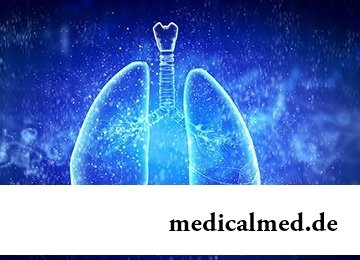 The syndrome of impassability of a respiratory path observed at any level from a throat to bronchioles, is called obstruction of respiratory tracts. In most cases the state is caused by full closing or reduction of a gleam of a throat that becomes possible for the following reasons:
The syndrome of impassability of a respiratory path observed at any level from a throat to bronchioles, is called obstruction of respiratory tracts. In most cases the state is caused by full closing or reduction of a gleam of a throat that becomes possible for the following reasons:
- Hit in respiratory tracts of a foreign body;
- Allergic, infectious and inflammatory diseases – bacterial tracheitis, Ludwig's quinsy, a fungal infection, retropharyngeal and peritonsillar abscess, a laryngotracheobronchitis and diphtheria;
- Adenoides and lostintubatsionny hypostasis;
- Burns and injuries of respiratory tracts;
- System disturbances, tumors and cysts of a throat;
- Hypertrophic tonsillitis;
- Neurologic damages and post-tracheostomy stenosis;
- Volume processes in areas, close to pneumatic ways and a throat.
Also inborn diseases to which number they belong can act as the reasons of obstruction of respiratory tracts:
- Anomalies of craniofacial area;
- Hypocalcemia and tracheosesophageal fistula;
- To Laringomalyation and laringotsela;
- Neurologic frustration;
- Subcopular stenosis and vascular ring;
- Birth trauma;
- Tracheomalacia and tsistogigroma.
Allocate obstruction of upper and lower respiratory tracts, and also two of their forms – fulminant (acute) and chronic. Also in medicine it is accepted to divide stages of obstruction of respiratory tracts, namely:
- Compensation;
- Subcompensation;
- Decompensation;
- Asphyxia end-stage.
Obstruction of respiratory tracts and hypoventilation (breath disturbance) most often arises at patients at night. Hypoventilation in process of obstruction increase amplifies.
At the patients or victims who are in coma, obstruction can be provoked by an overshoot of respiratory tracts the sunk-down language.
Symptoms of obstruction of respiratory tracts
Obstruction of upper respiratory tracts usually arises at newborns and children of preschool age owing to anatomo-physiological features of a respiratory organs. This state is shown by the following symptoms:
- Arterial hypotension;
- The strengthened operation of the respiratory device;
- Increase in the ABP and inspiratory asthma;
- Absence at rest of cyanosis, at loading appears perioral or diffuse cyanosis;
- Coma and spasms;
- Tachycardia and bradycardia;
- The increased perspiration;
- Block and sharp pallor;
- Breath paradox.
Obstruction of the lower respiratory tracts also most often occurs at children of younger age, and this state is shown by the following symptoms:
- Impossibility of the patient to inhale air;
- Emergence of a loud sound, rough noise or whistle during a breath;
- Cough;
- Delay of pulse;
- Posineniye of integuments;
- Swelling of lungs;
- Apnoea.
At obstruction of respiratory tracts the foreign body observes development of an aphonia, cyanosis, and also acute respiratory insufficiency. At the same time the patient cannot speak, cough, breathe, he often grabs a throat, spasms can begin, develop an asfiksichesky syndrome. If the patient is not given the emergency help in time, he faints, and then there comes sudden death.
Treatment of obstruction of respiratory tracts
At identification of the first symptoms of obstruction of the patient it is necessary to bring to intensive care unit urgently. Often at a pre-hospital stage first-aid treatment is required. If obstruction of respiratory tracts is observed at the child, him it is impossible to leave one, it is important to calm the kid and to take on hands as fear, shout and concern can strengthen the stenosis phenomena. First aid directly depends on the reason which served to a state and also on expressiveness of obstruction.
If at respiratory tracts there is a foreign body, slime, emetic weight or liquid, it is necessary provided that the patient is in consciousness, to ask to try to clear the throat properly it. Or such manipulation does not help with cases when the patient cannot cough, it is possible for elimination of full obstruction of respiratory tracts a foreign body, at a pre-hospital stage, to apply Geymlikh's reception. The reception technique if the patient is in consciousness, consists in the following actions:
- It is necessary to rise behind the back of the patient, to clasp him with hands and to press palms on a stomach, at the level above a navel;
- It is sharp to squeeze a thorax bystry pushes of 4-5 times;
- Then more slowly to continue to squeeze a thorax until the foreign body does not leave, and the patient will not begin to breathe normally.
If the patient is unconscious, Geymlikh's reception is carried out as follows:
- The patient is laid a back on the floor;
- The person giving first aid sits down on the victim's hips, puts one palm to the nadpupkovy area of the patient;
- Puts the second palm on the first, then 5 times presses the bystry tolchkoobrazny movements on a stomach;
- Then it is necessary to open a mouth of the victim and to try to take a foreign body the bent index finger.
If at the victim symptoms of the accruing obstruction of respiratory tracts and the hypoventilation which is gradually leading to a cardiac standstill are shown it is necessary to provide measures of the emergency resuscitation which cannot be performed without the special medical equipment.
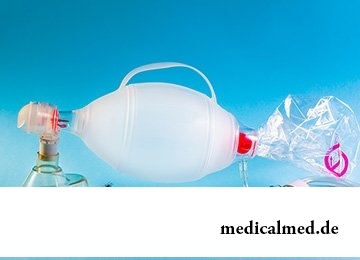 The general principles of treatment of obstruction of respiratory tracts at children in medical institution, depending on a syndrome stage, are:
The general principles of treatment of obstruction of respiratory tracts at children in medical institution, depending on a syndrome stage, are:
- The measures directed to impassability recovery – reduction or elimination of a spasm and hypostasis of a mucous membrane of respiratory tracts;
- Obstruction elimination – release of a gleam of a throat from a pathological secret;
- Correction of metabolic disturbances;
- Antibacterial therapy;
- Trachea intubation;
- Artificial ventilation of the lungs.
Obstruction of respiratory tracts call a state at which the patient has at the level from a throat to bronchioles an impassability of a respiratory path. The victim needs to provide first aid and in the shortest possible time to bring to intensive care unit.
Blood of the person "runs" on vessels under huge pressure and at disturbance of their integrity is capable to shoot of distance to 10 meters.

Popular joke that there are no healthy people, and is nedoobsledovanny, most of us considers an honest truth, and put that...
Section: Articles about health
Feeding by a breast - the integral part of ideal motherhood allowing to come into contact with the kid and to create to it healthy immunity since early years. Nevertheless, this important process in life of mother and child can be saddened laktostazy − by a delay of milts...
Section: Articles about health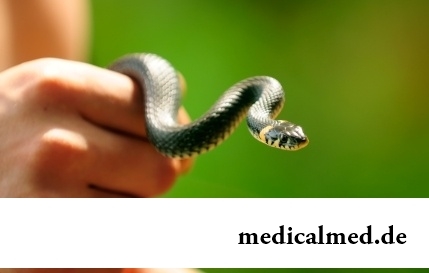
Health and attractiveness - eternal values, pursuing which people often use the most unusual ingredients and technicians. Let's consider 11 most exotic and sometimes not most pleasant Spa procedures to which the person in a pursuit of beauty and youth agrees....
Section: Articles about health
Each failure in work of bodies and systems of a human body is, as a rule, shown by the whole complex of symptoms. In particular, N...
Section: Articles about health
Herpes simplex of the first type (the infectious disease which is shown periodic bubble rashes on lips is called) – one of the most widespread illnesses. Statistically, only 5% of inhabitants of our planet are unreceptive to its activator, and...
Section: Articles about health
Scientists have no unambiguous opinion on a proximate cause of emergence of a carcinoma cutaneum today. Only the factors promoting development of this illness are precisely established. Treat them: long impact on skin of ultraviolet rays, radiation exposure, thermal injuries, injuries of skin by aggressive chemicals (pitches, acids, alkalis, etc.), genetic predisposition (existence of malignant new growths of skin in the family anamnesis), at...
Section: Articles about health
Life activity of one-celled fungi of the sort Candida is a proximate cause of development of candidiasis (milkwoman), it is related...
Section: Articles about health
The fatigue, sleep debt, disturbances of food, bad mood, vagaries of the weather – all these circumstances badly affect our appearance. Especially the person suffers: skin becomes flabby, loses healthy color, becomes covered by wrinkles, zones of hypostases and t appear...
Section: Articles about health
According to World Health Organization, every third inhabitant of Earth has excess weight, and every tenth has obesity. The reason of this phenomenon, according to specialists, roots in one not very comforting fact: most of people consume much more calories, than it is necessary. How it turns out what we overeat? Why it is so difficult to refuse an excess portion tasty or additives? Let's try to find out what factors prevent us to eat food with reasonable moderation....
Section: Articles about health
80% of women at least once to lives complained of discomfortable feelings to breasts, consolidations and nagrubaniye. These are mastopathy symptoms. Mas...
Section: Articles about health
Several decades ago the basil (the district khan, реан, Reagan) was considered as a part of the Caucasian or east cuisine, but today it strongly took the place on tables of Russians. Greens of this plant possess a strong, pleasant smell and specific fresh taste, because of to...
Section: Articles about health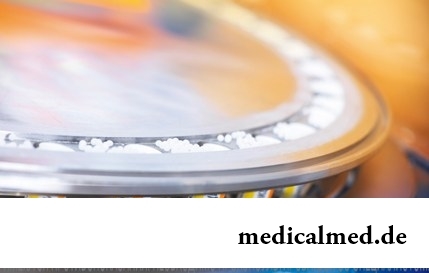
For the help to doctors in the choice of optimal solutions for treatment of various diseases the Cochrane scientific organization (Cochrane) conducts joint researches with representatives of scientific community around the world. The analysis of a series of the conducted researches of the drug Oscillococcinum® relating to group of cold remedies became one of the last methanolyses....
Section: Articles about health
The winter swimming in open reservoirs called in our country by "winter swimming" – officially recognized sport and one of the ek...
Section: Articles about health
Dietary supplements (dietary supplements) for the last decades were so thoroughly included into our life that, apparently, it is already impossible to find the person who at least once did not try them. At the same time, most of our compatriots have a vague idea about...
Section: Articles about health
History of mankind contains several tens of epidemics whose emergence was compared by eyewitnesses and historians to doomsday. The most terrible of them claimed the lives of millions of people, having made even the whole people to the person of the earth. What they − the diseases striking terror? Whether it managed to the person to find treatment, or he is still powerless before forces of nature?...
Section: Articles about health
Epilepsy is one of widespread neurologic diseases. To parents, whose children suffer from this illness, it is necessary...
Section: Articles about health
The pancreas performs two functions in a human body: release of enzymes without which digestion of carbohydrates, fats and proteins, and a producing hormones is impossible. The most important of them - insulin, is the main participant of carbohydrate metabolism, a normal...
Section: Articles about health
About 20% of the population of our planet have a hypertension (permanent increase in arterial pressure). This disease has an adverse effect on the standard of living, reduces working capacity, and in the absence of systematic treatment threatens with such complications as a myocardial infarction, a stroke and other heavy illnesses which can result in disability or sudden death. Most of patients for maintenance of pressure at more or less acceptable level accept appointed doctors лекарст...
Section: Articles about health
The pine is one of the most widespread plants of our woods. Its needles and pitch not without reason called by "gallipot", since ancient times испол...
Section: Articles about health
You heard that laughter prolongs life? Researchers did not manage to establish longevity direct link with sincere fun yet, but several facts confirming beneficial influence of risibility on the state of health are clinically proved....
Section: Articles about health
One of the useful properties presented to the person by the nature is ability to feel fear. This ability is designed to signal about approach of a dangerous situation and to help to avoid in advance it to keep life. However if the fear is persuasive and is not reasonable, it can seriously limit possibilities of the person in respect of socialization and self-realization. Such pathological fear is called a phobia....
Section: Articles about health
Life does not indulge the modern woman special emotional comfort and carelessness. Fatigue, troubles at work, misunderstanding...
Section: Articles about health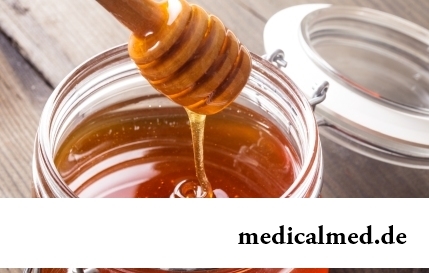
The trophic ulcer is not an independent disease. This heavy complication arising owing to a thermal injury (a burn or a frostbite), chronic pathologies of arteries or veins of the lower extremities, a diabetes mellitus, and also some defeats of a soyeda...
Section: Articles about health
All know that self-treatment is dangerous. However absolutely it is almost impossible to do without it. Rate of modern life does not allow to handle each small trouble to the doctor and information on ways of independent delivery of health care is quite available. Means, all of us have only one: to learn to give this help competently and in those limits in which it is possible for the person who does not have vocational education....
Section: Articles about health
Bulimia and anorexia, are heavy deviations of a feeding behavior, become a cause of death of patients much more often than all others...
Section: Articles about health
The drugs stopping or oppressing life activity of pathogenic microorganisms are widely applied in clinical practice from 40th years of the last century. Originally antibiotics were called only substances natural (animal, vegetable or микробног...
Section: Articles about health
Doctors claim that the people not so familiar with a dorsodynia occur among adult Russians very seldom. At the same time the vast majority of the patients who are periodically testing this indisposition do not hurry to ask for medical care at all. On the one hand, there is an opinion that feelings of this sort at mature age are nearly natural phenomenon which is not doing serious harm to health. With another – practice of self-treatment various obezbol is eurysynusic...
Section: Articles about health
